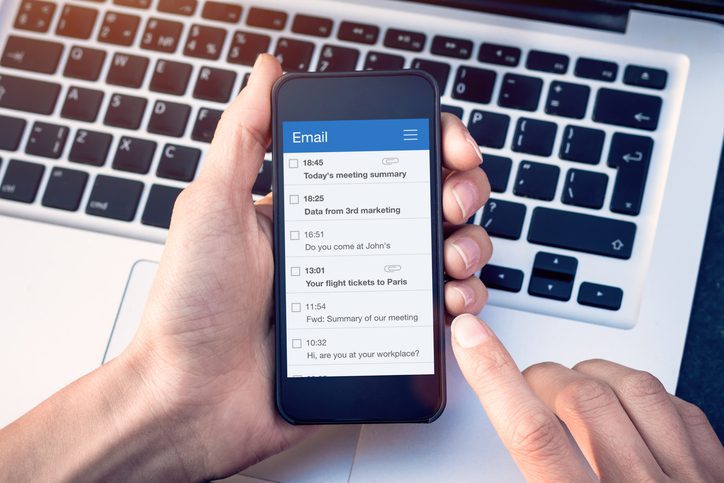How to Get Your Team to Be More Courageous
During my career, I’ve worked with senior and executive teams to increase the effectiveness of their collective leadership. One of the big skill areas that correlate to whether a team is high performing or not is what we call “Courageous Authenticity.” Put simply, does a team have the capacity to be real with each other; do they share their opinions openly; do they consider other perspectives without judgment; and do they hold the team interests above their own.
Over the past few months I’ve had several teams identify this leadership competency as an area they want to grow and develop so it becomes part of their operating system. So, here are two ways to help your team be more courageous and real with each other.
1) Be confident with your own identity, and share your opinions. When tensions arise, people often feel their identity is being threatened – examples include competence, need to be liked, etc. When threatened, people either get defensive or retreat. It’s impossible to be courageously authentic when you’re in a defensive orientation. I coach my clients to anchor back to the belief that they are entitled to their own opinions, just as others are entitled to their viewpoints. When expressing your opinions or as I say speaking your truth, you’ve got to be confident in your own identity and not worry about what others think. If you fear rejection, you’ll either go into fight mode or retreat. Bottom line, be confident with your own identity, and speak your truth even though it may ruffle some feathers. Advocate for yourself.
2) The second way to be courageously authentic is to understand where others are coming from. There are three behaviors to start practicing as was outlined in Difficult Conversations by Douglas Stone, Bruce Patton, and Sheila Heen: Inquire, Paraphrase, and Acknowledge.
Let’s start with the ability to inquire. By asking solid open-ended questions, without judgment or blame, you can start to understand their story. Asking good insightful questions will mitigate defensiveness. The second practice is paraphrasing. Paraphrasing is about replaying back what you are hearing to ensure you are getting it. Phrasing such as “I’m hearing that you and your team are feeling threatened by this new policy, is that correct?” And lastly, people need acknowledgement to feel valued. They need to know their opinions matter and that they matter. Acknowledging does not mean that you’re agreeing with them, it simply means you understand and are hearing their position. Acknowledgment phrasing sounds like, “I now see where you’re coming from and I understand your concerns.” You have not agreed with them, just acknowledged their viewpoint and/or position.
If team leaders start to practice these two skill areas, their level of courageous authenticity will increase. And as we know from our work with The Leadership Circle, courageous authenticity is one of those power competencies that impact all aspects of a team’s performance.
If you have ideas and suggestions to help teams show up more courageously, post your comments and join the discussion!
The Power (of the) Nap
People have long searched for the remedy to the afternoon exhaustion that sets in, leaving them tired and unproductive. Employees often sip coffee or pound energy drinks in an attempt to stifle their grogginess. But research indicates the best thing you can do to improve your alertness, mood, and productivity, is simply take a power nap. Power naps have proven to be extremely effective in combating the effects of sleep deprivation and boosting productivity during the mid-day lull. In a research study conducted by the NASA sleep researchers, a short power nap of just 26 minutes boosted the performance of their pilots by an impressive 34%.
The act of napping shouldn’t be viewed as laziness or lethargy, but rather an essential part of the day. Winston Churchill was a major fan of naps, saying, “You must sleep sometime between lunch and dinner… Don’t think you will be doing less work because you sleep during the day.”
In the corporate world, a power nap may be a hard thing to implement. Companies like Google have established extravagant places for their employees to nap, referred to as the Energy Pods. But for those who aren’t lucky enough to enjoy the exuberant benefits provided by companies like Google, we may have to adjust our thinking on the implementation of napping into the work place. Based on the statistics, napping will increase employee productivity. For managers, power napping should be something that is encouraged. The best investment you make in your business might just be a comfortable place for employees to slip away for a quick nap. For employees working in an environment where napping is taboo, look for a quiet place during your lunch hours. At the very least, try napping when you get home. It could seriously improve your mood during the evenings, and increase performance for any leftover work you have.
Here are some quick tips to get the most out of your power naps:
- Go dark and quiet. The body is most able to fall asleep in this setting. If this means goofy earplugs and an eye mask, so be it.
- Keep it short. A power nap should only last between 20 and 30 minutes. Napping for too long can actually increase grogginess.
- Be consistent. Try to shoot for napping at the same time each day so your body gets accustomed to napping and you will fall asleep faster.
So the next time you go to pour your fourth cup of coffee in an attempt to push through the afternoon, remember the power of napping. It will boost productivity, performance, mood, and alertness, and leave you feeling ready to take on the rest of your day.
An often forgotten best practice: “Starting with Why”
As organizations finalize their new year strategic planning, many are now shifting toward communicating and socializing their strategic direction so that their constituents not only “get it”, but are engaged, energized and inspired to take action.
Having worked with many clients in the practice area of change management, we have learned that many organizations miss the compelling “WHY” component. In other words, organizations launch into what we’re going to do and what we’re going to achieve, but do not include as part of the communication process why we’re asking you to change, why it’s important to be engaged, why we need you as part of the process, etc.
I recently came across a great book that reminded me of the importance of the WHY. Start with Why, by Simon Sinek, argues that we all think, act, and communicate in the exact same way – and it’s the complete opposite of what we all do. He refers to this powerful concept as The Golden Circle – and it provides a framework for building organizations, executing initiatives, and inspiring people to take action.
Any organization can explain what they do and how they do it. However, few are able to articulate why they exist. It is not about profit targets (those are results), or how we’re going to achieve our goals (those are strategies). The WHY is about communicating why your organization exists, why you do the things you do, why customers buy your products, and why your employees are loyal and proud to be associated with your organization. It seems intuitive which perhaps is why it’s often overlooked!
Starting with WHY works in big business and small business, in the nonprofit world and in politics. Those who start with WHY never manipulate, they inspire. And the people who follow them do so because they want to, not because they have to.
Check out Sinek’s book. A great read over the holidays.
Learning to love your inbox
Take a look at your inbox right now. How many unread or unanswered emails are in there? If your answer leaves you feeling overwhelmed, you’re not alone. But, your inbox holds more importance than you may think.
Experts say that in the next year, we will spend 30 to 40% of our workday addressing emails, and that today’s business professional receives and/or sends about 115 emails each day. No doubt that’s a lot to keep up with.
Let’s do the math: If each email takes on average about two minutes to either create or respond to, that turns out to be 230 minutes a day, or about four hours.
What we’ve heard from our clients is they’re working in their inboxes early in the morning, during lunch, before dinner, and right before bed. Some have said emails are like coffee – they’re both addictive! (For the record, we find coffee much more satisfying!)
There is some hope to the inbox inefficiency madness. Before you let your inbox start to manage you, learn how you can manage it.
Strategies for email efficiency
1. Empty your inbox daily – This has actually been the most challenging for me to implement because I like having everything in one searchable box. I think I know where everything is, but do I really? The problem is that this method increases the likelihood for missing an email that is important. I’ve adopted the two-minute rule that was discussed in David Allen’s book ‘Getting Things Done: The Art of Stress-Free Productivity.’
Allen suggests that the first thing you do is evaluate whether the email is actionable or not actionable. If the email is actionable, determine whether you can do it in two minutes or less. If so, do it immediately. If the action can be delegated to someone who can do it better, delegate it. If you anticipate it will take more than two minutes, move it to a processed inbox and come back to your emails later when you have time to process them.
If the email is not actionable, delete it or put it into a reference folder or folders. Although not recommended, I do have multiple “reference” folders created that include admin, clients, projects, etc. It’s a matter of preference and what will work for you.
2. Less is more – Be intentional about sending less, and receiving less emails. In the book ‘The Hamster Revolution: How to Manage Your Email Before it Manages You,’ authors Tim Burress and Ken Blanchard talk about how to deliberately pause before pushing the ‘reply all’ button and ask if the email needs to be sent to everyone on the original distribution list.
We continue to see a proliferation of “reply all” emails going out, and the interesting thing is that Burress’ research says that almost 80% of people say that others send too many ‘reply all’ emails, but when asked if they send too many only 13% fessed up to overusing the ‘reply all’ button. People don’t like doing it, but don’t think they’re guilty.
If you’re trying to send less with the goal of receiving less emails, think about who you’re sending the email to before you push the ‘reply all’ button.
3. Quality over quantity – Ever get those emails that ramble on and it takes two minutes to identify the reason for the email? With emails, being concise is key. People have short attention spans, so get to the point in the first paragraph. Another suggestion is to use the subject line to effectively communicate the purpose of the email. Connecting the subject line closely with the content/purpose of the email will make it more searchable should you have to go back into your process inboxes and/or reference folders.
There are a lot of best practices out there to work smarter. If you have any email management ideas that have worked well for you, we’d like to hear from you!
The ROI of time: 3 ways to maximize it!
The other night I was watching my favorite reality show “Shark Tank” when Mark Cuban pondered whether or not to invest in a new entrepreneurial venture. When he finally responded “I’m out,” Mark clarified that he really didn’t know much about the product space and that his primary resource was his time, and he really didn’t see that his investment of money and time would realize a solid ROI.
I’ve thought about Mark’s comment multiple times this past week and have been more focused on assessing whether my time is getting a good ROI. Honestly, I was surprised at how many times I stopped and redirected my time and energy toward something that was adding value to StarQuest, our team, and my priorities.
It’s easy to get derailed on our time. Some would say that our culture is addicted to busyness, and it’s only getting worse. There are a lot of distractions in our daily lives (e.g., emails, meetings, problems), with plenty of opportunities to invest our time in places that really don’t generate a good ROI. Furthermore, what happens when we busy ourselves is we get tired, less focused and then are unable to be effective on the things that matter.
So here’s what I’ve learned to help me stay productive and maximize the ROI on my time:
1.) Be clear on where you add value. What are you good at and what are your strengths? Mark Cuban is very clear on where he adds value and he sticks to that rule. If you’re not adding value, then you may want to evaluate whether you’re the best person to get the job done and perhaps delegate.
2.) Be conscious of where your time is going. Raise the yellow flag when you find yourself doing things that you like, but do not necessarily add value to your company, your team and/or priorities. It’s easy to get sucked into “stuff” that really doesn’t maximize your value. Trust me, this is an area that I have to constantly monitor and assess.
3.) Clarify your priorities and plan daily. I recently heard of a study that said the majority of executives don’t get to their important tasks until the afternoon primirarly because they get derailed early in the day on the unimportant, urgent tasks. Keeping your priorities clear and planning daily will help you stay focused on the tasks that maximize your value and ROI.
Carl Sandberg once said, “Time is the coin of your life. It is the only coin you have, and only you can determine how it will be spent. Be careful lest you let other people spend it for you.”
What are some practices, disciplines, tools that you’ve used to maximize the ROI on your time? Also, what is the hardest thing about maximizing your team’s ROI on their time? Please share your comments with us.





